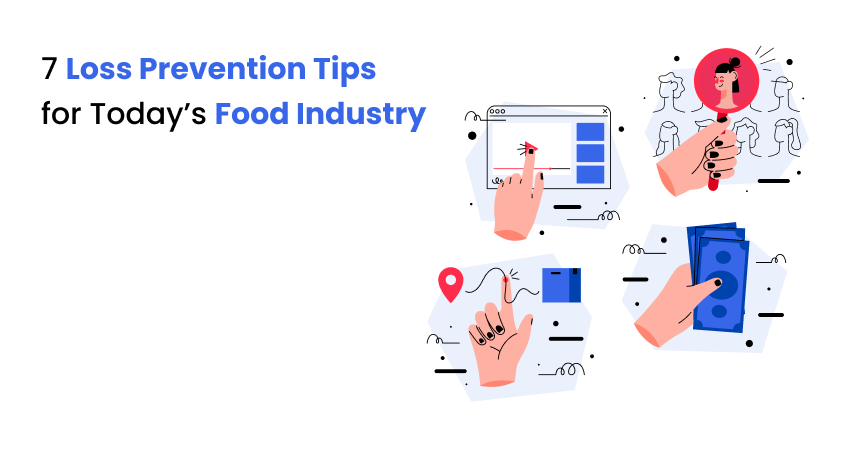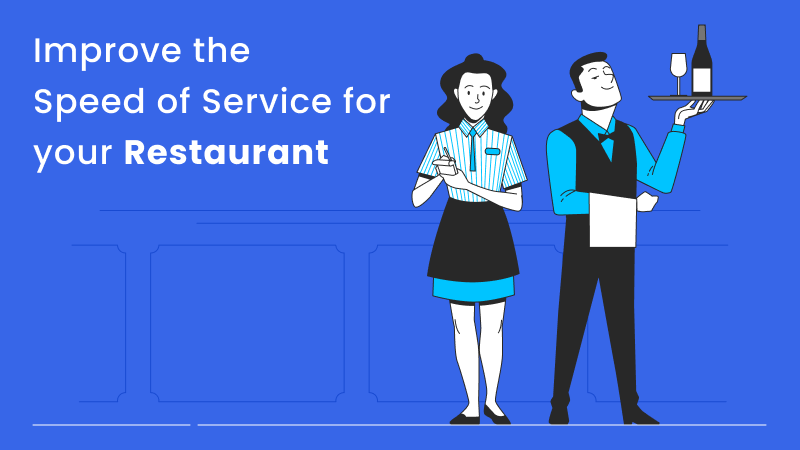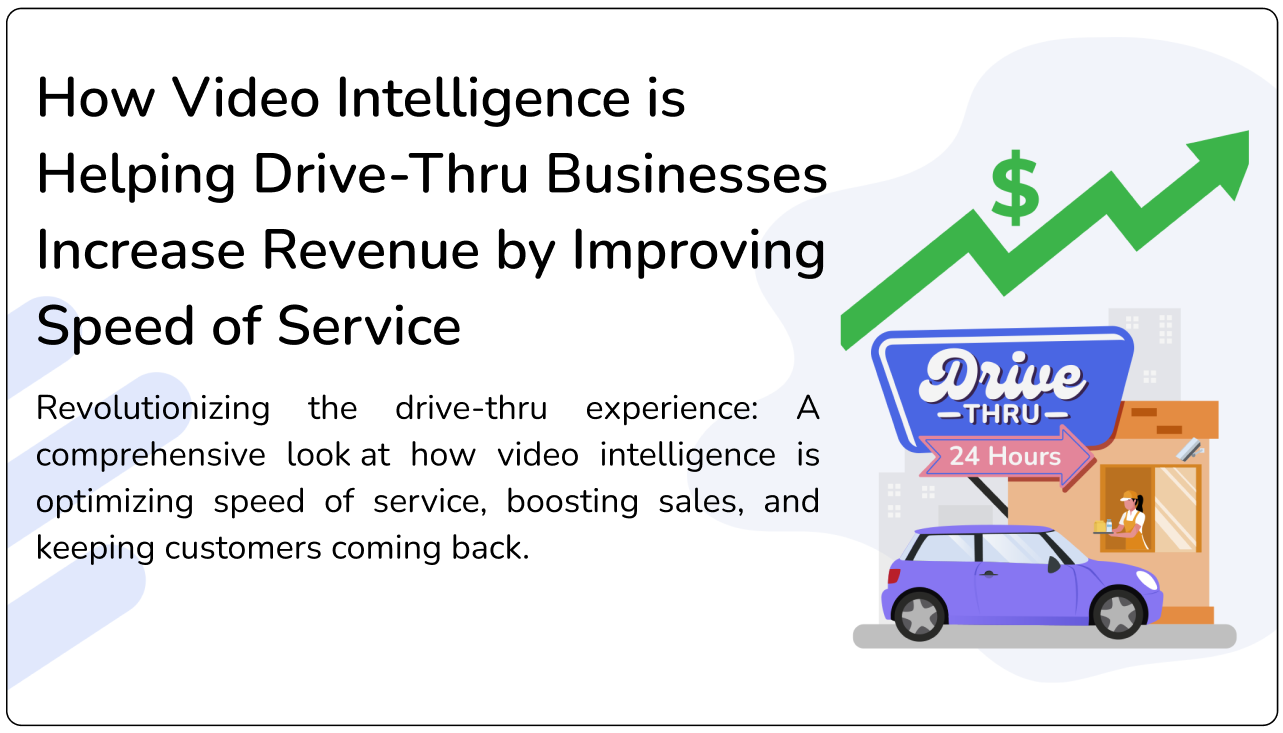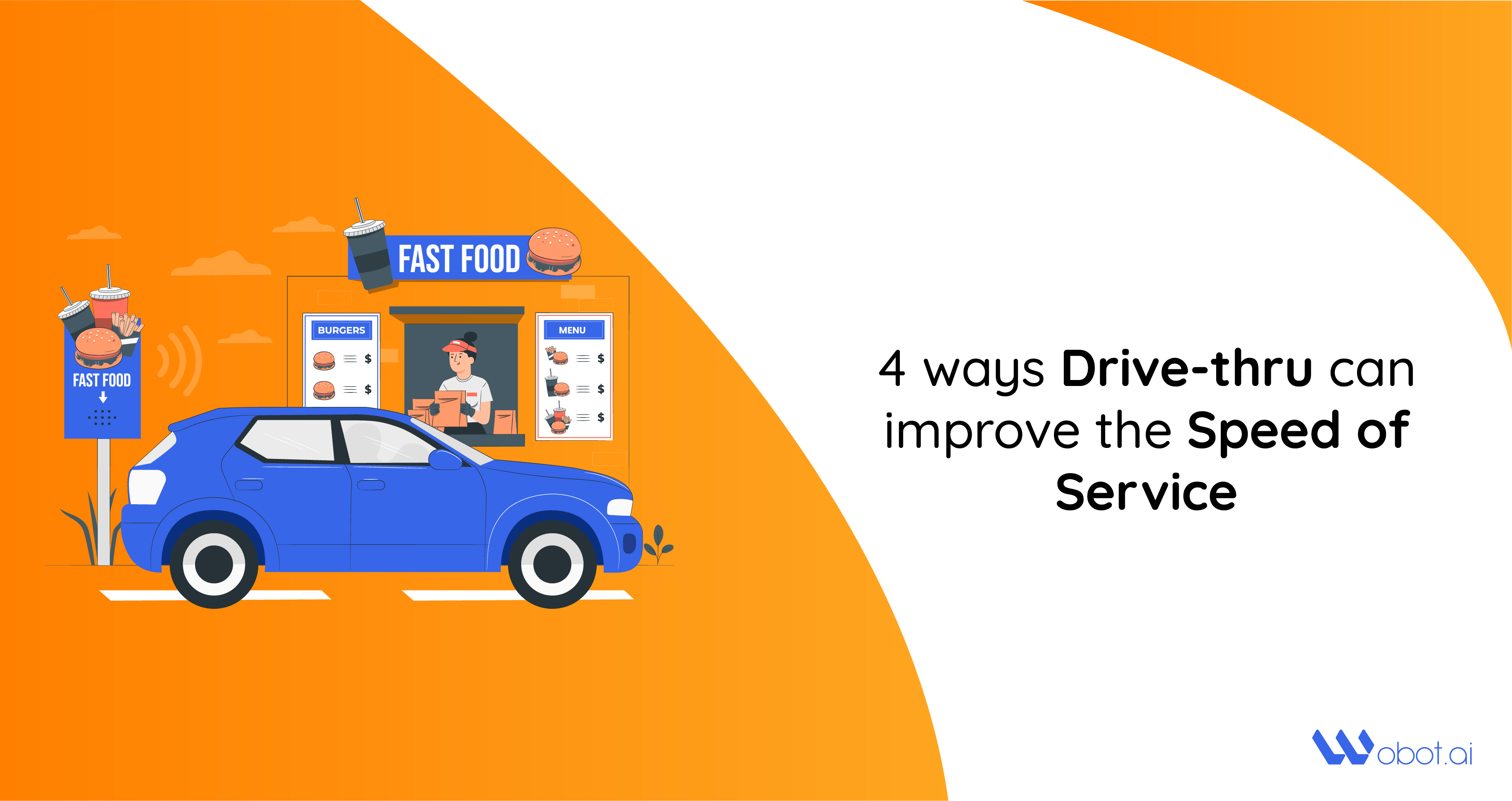Quick Food Safety Guidelines For Your Restaurant
Written by Team Wobot
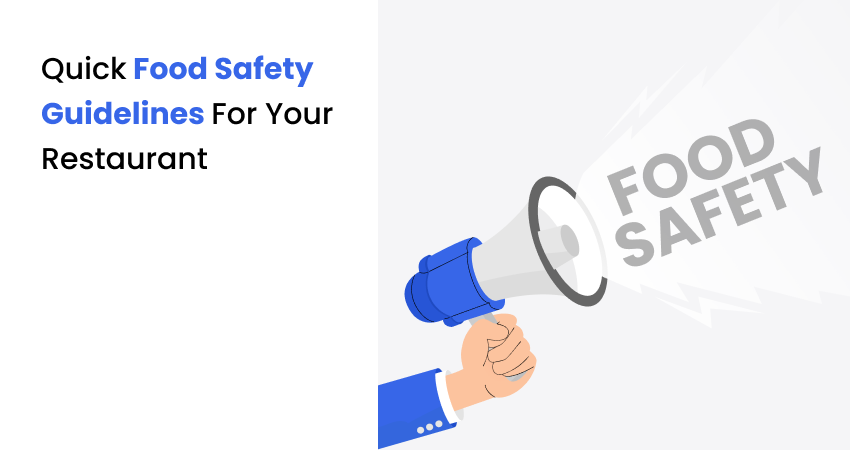
Mothers, elders, and restaurant patrons are often quick to point out if any eatery lacks safety protocols. Food safety is an important aspect of managing a restaurant. Food safety directly affects the restaurant's sales and ratings, making it crucial to driving revenue. Similarly, restaurants need to ensure that their food is safe for consumption as it is directly linked with the health and safety of their customers.
How is food safety directly linked with increased sales?
Imagine two scenarios - a person orders food from two restaurants. While one restaurant delivers stale food that looks unappealing, the second restaurant serves hygienic, fresh, safely-prepared, aromatic, and visually-appealing food. There is no need for second-guessing where that customer will order again.
Similarly, no matter how enhanced customer experience you provide, a customer will always prioritize their health and safety because a lack of food safety can lead to food poisoning and other health issues.
Having safety protocols and standards that help provide food of the highest safety standard ensures that restaurants create a loyal, repeating, and high-retention customer base. Once a customer eats from your restaurant, they are likely to become your customer for life. This guarantees a fixed and guaranteed revenue stream for your restaurant.
Moreover, these customers are likely to recommend your restaurant for dine-in, takeaways, and deliveries to their friends and family. Thus, your business is likely to grow rapidly through word of mouth without you having to spend a dime on marketing.
Three factors of food safety
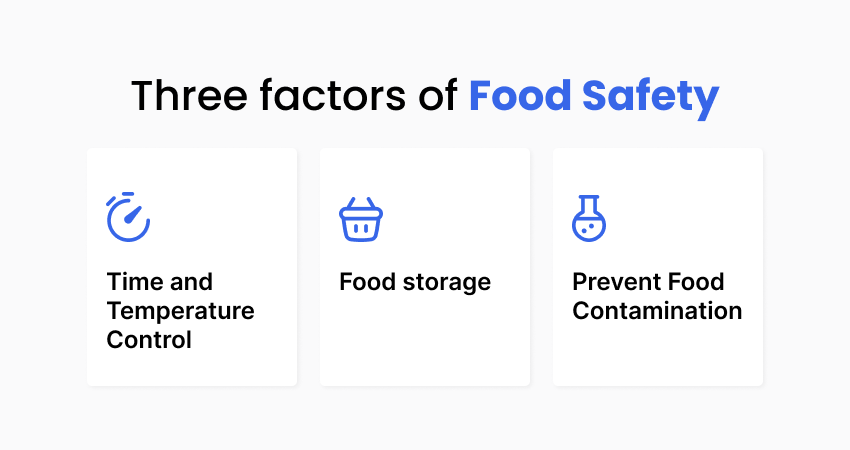
So, what are the most effective ways to ensure food safety? There are three primary factors that your restaurant should emphasize to ensure that your food is safe for human consumption.
- Time and temperature control
- Food storage
- Prevent food contamination
Let’s have a detailed look at each.
1. Time and temperature control
Foods that require time and temperature control to ensure their safety are called TCS foods. They must be stored at a specific temperature and for a certain time to ensure no unsafe bacteria growth. Food can become hazardous to humans if bacteria growth isn’t controlled.
Bacteria need only three things to grow - food, moisture, and warmth. TCS foods contain a high level of nutrients and moisture. Just add time and warmth to it, and they become an easy breeding ground for bacteria.
2. Food storage
How you store your food also plays a critical role in ensuring food safety. Here are some food storage tips.
- Follow the FIFO rule
Make sure to follow the ‘First In First Out’ rule to ensure that the older food is stored on the top of the front so that they are used first and doesn’t go past their expiry dates. By using this rule, you’ll protect both food quality and food safety.
- Store meat at the lowest level
Irrespective of whether the meat or meat items are sealed, store them below other items. As such, you will not have to worry about meat juices contaminating other items.
- When in doubt, throw it out!
If you suspect that the food has degraded in quality and is unsafe for consumption, don’t hesitate to throw it away. Some of the obvious signs of food decay or food degradation are foul smells.
3. Prevent Food Contamination
Consuming contaminated food can lead to food poisoning. Enlisted below are some crucial ways to prevent food contamination and food poisoning:
- Wash your hands and surfaces before, during, and after preparing food. You can implement a hand-hygiene monitoring system for the same.
- Separate meat items from ready-to-eat food items
- Cook food at the right temperature to kill harmful bacteria.
If you experience any symptoms of food poisoning, we suggest you visit a medical professional at the earliest.
Latest Food and Safety Standards Regulations
Food and safety standards and regulations vary from country to country. In this section, we will be examining the food safety regulations around the globe.
1. Global food safety standards
Across the globe, there are various food safety standards and guidelines established to ensure food safety. Here is a look at some global food safety standards.
2. Codex Alimentarius
The Codex Alimentarius is a collection of internationally-recognized codes, guidelines, and other food safety practices. It was published by the WHO and FAO in 1963. While the Codex Alimentarius is just a reference guide and not an enforceable standard on its own, several nations have adopted it in their regulations.
3. United States food system
The United States food system is regulated by various federal, local, and state bodies. There are three federal and two state governmental organizations responsible for food safety in the country. They are:
- The Food and Drug Administration (FDA)
- The Food Safety and Inspection Service (FSIS)
- The Centre for Disease Control and Prevention (CDC)
- The State Department of Public Health, and
- The State Department of Agriculture
- The FDA and FSIS enforce the current food safety laws in the country.
4. United Kingdom
The Food Standards Agency is an independent government body responsible for food safety and hygiene in the United Kingdom. Food business owners must have a documented Food Safety Management System. Moreover, food handlers are legally required to be trained in food safety.
How can Wobot Help?
Wobot.ai uses video intelligence to detect bottlenecks and deliver real-time insights to resolve them effortlessly. We use advanced technologies like computer vision and artificial intelligence to help monitor processes, actions, and objects autonomously to ensure that the highest level of food safety is maintained. For instance, computer vision can detect if an employee is not wearing a hairnet or gloves and relay that information to you in real-time. You can then take appropriate action quickly.
The setup is pretty straightforward and requires no additional hardware. You can set up the cameras effortlessly and bring the video footage from multiple sources to one place. Whether it be a big restaurant or a drive-through (QSR), Wobot can help improve food safety by providing you with real-time business-critical data.
Conclusion
Following food safety guidelines is essential to ensure your customer’s health and safety, comply with food safety laws, and avoid unwanted incidents. Ensuring food safety can also lead to rapid business growth as you will have a loyal, growing customer base.
Learn to identify, analyze and mitigate process deviations in real-time with video intelligence.
P.S. You’re signing up for value here. No spam. No overly promotional emails.
Related Blogs
See All
.png)

